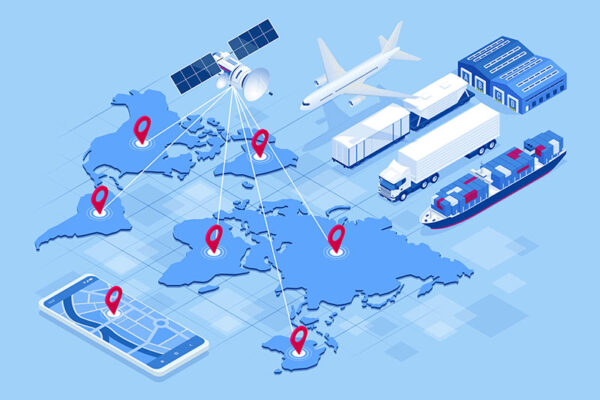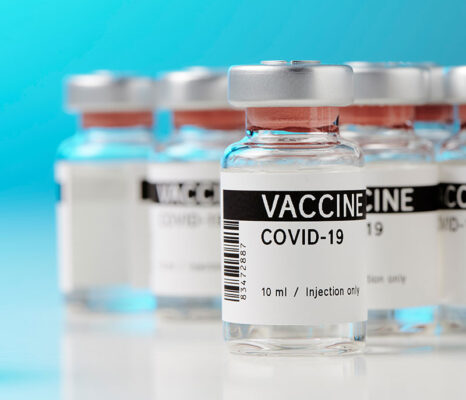How IoT-Enabled Monitoring Is Changing Cold Chain Logistics
By Greg Oppenheim
August 15, 2024
By Greg Oppenheim
August 15, 2024
Estimated reading time: 4 minutes

The Internet of Things (IoT) has transformed the efficiency and efficacy of perishable supply chains, such as long-distance food and pharmaceuticals.
According to Berg Insight, shipments of remote tracking systems with cellular or satellite communications capabilities for refrigerated cargo units reached 725,000 units worldwide in 2022. In 2027, they will reach 1.2 million units. Satellite and cellular IoT network technologies are essential to bolstering remote tracking system effectiveness and reliability.
The freezers and freight trains that make up the cold chain, or temperature-controlled supply chain, are supported by:
Smarter cold chains enable managers to receive live data about temperature and location from monitoring devices. These capabilities mitigate any problems along the chain before they arise.

Companies can use IoT in the cold chain to improve logistics and save money. Managers can monitor and toggle temperature settings as needed, reacting to:
Even when temperature errors are detected but can’t be addressed, IoT technologies allow supply-chain managers to act on issues before they become catastrophes. These capabilities reduce damage and waste.
Continuity within the cold chain reduces costs for consumers and businesses, making it a more profitable and beneficial system. Moreover, distributors can be confident that the product will be in great condition for the consumer, enhancing their relationships with clients.

Many items are sensitive to temperature and other environmental variations (e.g., tilt and vibrations), such as:
These goods require a steady and controlled temperature environment throughout the supply chain.
The same Berg Insight report highlights that about one-third of all food produced for human consumption globally is wasted. Most of that wastage occurs during transportation. Beyond rotting, there is also the loss of nutritional value.
The regulatory environment has, as a result, become even stricter. Businesses must invest in IoT solutions to protect these goods from spoilage and comply with these regulations.

When companies integrate IoT into the cold chain, sensor technology will locate, monitor and address once-invisible errors. Cold chain IoT technology allows for better visibility and enables data-driven decisions. This capability replaces the find-and-investigate way of identifying and addressing problems in the industry.
IoT solutions also add visibility that extends beyond temperature changes. Refrigeration units have sensors that remotely monitor different variables, such as refrigerators’ operational health.
Food, drugs and other perishables will reach their destination fresh and intact. As a result, your business will reduce waste, improve efficiency and enable widespread product distribution.
The industry must address four challenges to implement and maintain IoT and sustain an unbroken cold chain.
Intermodal transport (i.e., crossing oceans with no cell towers) often requires IoT solutions that can switch between cellular and satellite networks. In indoor environments (e.g., warehouses), IoT solutions should use Wi-Fi and Bluetooth® wireless technology since cell towers may not have a direct line of sight. For all these scenarios, there must be an easy handoff between types of connectivity.
IoT solutions monitoring goods in storage or transport for an extended period won’t usually have access to an onboard power supply. As such, the internal battery must have sufficient life.
Some goods only need routine check-ins. However, others might need to communicate data points more frequently. Optimal latency can prevent connectivity gaps and enable timely intervention.
Many IoT solutions require businesses to combine different hardware and software elements. If the hardware doesn’t work with the other software components, the entire system won’t work. Interoperability is essential, especially if manufacturers want to build solutions or a standard product that is easy to deploy.
As pioneers in the IoT industry, Telit Cinterion innovates constantly. It has helped hundreds of enterprises develop cold chain solutions to drive their business forward.
Telit Cinterion has expanded its service offering to include ODM and EMS. We can build the box or the board, including validation and certification testing for the solution. Our module portfolio keeps evolving, enabling you to bring the latest technologies to market.
Your solution should be flexible and connect to the available networks as goods travel through different network environments. As an IoT MVNO with embedded SIMs (eSIMs), we can work with multiple providers across regions, making us an ideal partner.
In addition, Telit Cinterion’s connectivity services enhance your cold chain solution, increasing reliability and reducing costs. With our bundled offerings, we empower you to get to market fast.
Speak with our IoT supply chain experts to create your custom IoT solution.